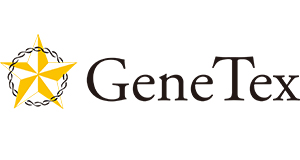ATXN2 antibody (HL1902)
ATXN2 antibody (HL1902)
Artikelnummer
GTX637651-100
Verpackungseinheit
100 μl
Hersteller
GeneTex
Verfügbarkeit:
wird geladen...
Preis wird geladen...
Quote the promo code SZANTIBODY when ordering to receive a 10% discount on this antibody, from October 1st to December 31st 2024. No additional discounts during the promo.
Clone Name: HL1902
Light Chain: Kappa
Application Note: WB: 1:500-1:3000. *Optimal dilutions/concentrations should be determined by the researcher.Not tested in other applications.
Calculated MW: 140
Form: Liquid
Buffer (with preservative): PBS, no preservative.
Concentration: 1 mg/ml (Please refer to the vial label for the specific concentration.)
Background: This gene belongs to a group of genes that is associated with microsatellite-expansion diseases, a class of neurological and neuromuscular disorders caused by expansion of short stretches of repetitive DNA. The protein encoded by this gene has two globular domains near the N-terminus, one of which contains a clathrin-mediated trans-Golgi signal and an endoplasmic reticulum exit signal. The encoded cytoplasmic protein localizes to the endoplasmic reticulum and plasma membrane, is involved in endocytosis, and modulates mTOR signals, modifying ribosomal translation and mitochondrial function. The N-terminal region of the protein contains a polyglutamine tract of 14-31 residues that can be expanded in the pathogenic state to 32-200 residues. Intermediate length expansions of this tract increase susceptibility to amyotrophic lateral sclerosis, while long expansions of this tract result in spinocerebellar ataxia-2, an autosomal-dominantly inherited, neurodegenerative disorder. Genome-wide association studies indicate that loss-of-function mutations in this gene may be associated with susceptibility to type I diabetes, obesity and hypertension. Alternative splicing results in multiple transcript variants. [provided by RefSeq, Nov 2016]
Uniprot ID: Q99700
Antigen Species: Human
Immunogen: Recombinant fragment of human ATXN2
Purification: Affinity purified by Protein A.
Conjugation: Unconjugated
Full Name: ataxin 2
| Artikelnummer | GTX637651-100 |
|---|---|
| Hersteller | GeneTex |
| Hersteller Artikelnummer | GTX637651-100 |
| Verpackungseinheit | 100 μl |
| Mengeneinheit | STK |
| Reaktivität | Human, Rat (Rattus) |
| Klonalität | Recombinant |
| Methode | Immunofluorescence, Immunohistochemistry (paraffin), Western Blotting, Immunocytochemistry |
| Isotyp | IgG |
| Human Gene ID | 6311 |
| Wirt | Rabbit |
| Konjugat | Unconjugated |
| Produktinformation (PDF) | Download |
| MSDS (PDF) |
|

 English
English







